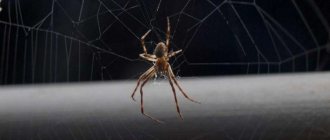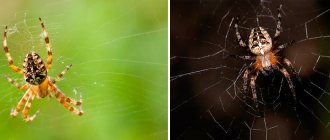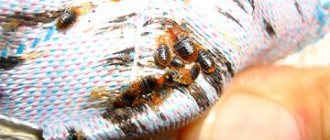Admit it, how would you feel about being next to a spider? There are a lot of jokes about this topic on the Internet. Someone expresses their readiness to transfer the living space to the uninvited guest or even set it on fire. Others like the option of moving to another planet. Fear of arachnids is called arachnophobia, but has deeper roots associated with the fear of the animal world as a whole or its individual components. What is it associated with and is it treatable?
In this article:
Why do spiders become objects of fear? In what cases is fear of spiders an acquired phenomenon? Statistics and paradoxes Exploitation of arachnophobia in art How arachnophobia manifests Treatment of arachnophobia How to stop being afraid of spiders: practices at home Prevention of arachnophobia
Why spiders become objects of fear
Photo by Egor Kamelev: Pexels
A psychotraumatic situation can turn anyone, even the smallest creature or phenomenon, into an object of panic horror. In addition, fear of arachnids in psychiatry and physiology can be provoked by the following factors:
- Difference in shape.
The constitution of people and spiders is fundamentally different, which in some cases is the root cause of arachnophobia. The presence of many legs causes fear of other insects and labiopods.
- Silent movement.
The instinct of self-preservation is helped by the ability to see and hear danger. In the case of arachnids, not everything is so simple: their low weight allows spiders to move silently, which makes their detection sudden. Thus, a defense mechanism is triggered when there is a threat of a possible attack, which in the case of a phobia is accompanied by panic and other inadequate reactions.
- Threat to health and life.
Some spiders are dangerous to humans, since when bitten they can poison the blood, causing necrosis, paralysis of the nervous system, latrodectism (a clinical syndrome accompanied by increasing pain) or allergic reactions. This is a rational fear of threat.
What is arachnophobia?
Are spiders really that scary?
Spiders, especially in our country, are absolutely harmless creatures. Even if we are talking about poisonous representatives, they never show aggression first, that is, they do not attack, but rather defend themselves. And it’s not so easy to meet a poisonous spider, because almost all of them are listed in the Red Book. These include:
- Karakurt;
- Eresus;
- South Russian tarantula;
- Cross spider;
- Silver water spider.
This is also interesting: Are spiders bothering you in your apartment? We know what to do!
They pose a danger to life and health, but only if you do not know some details about them.
If we talk about karakurts, then only females, which are several times larger than males, pose a danger. Tarantula bites are not very pleasant, as they can cause an allergic reaction, and a rather painful tumor forms at the site of the bite. True, it is quite easy to reduce the likelihood of negative consequences - just burn the bite site with a match. Eresus bites are not very pleasant, but do not pose a threat to life or health; discomfort at the site of the bite goes away after 2-6 days. The same can be said about the bites of the cross and dropsy - they are painful, but not dangerous.
The number of truly dangerous species is not very large, so not every person can encounter them in everyday life. You should also remember that a spider, even the most poisonous one, does not attack first, so when you meet it you need to behave calmly, without forcing it to defend itself.
When is fear of spiders acquired?
The listed reasons are not the only possible factors influencing the development of arachnophobia. In some situations, it is formed as a stereotype of the perception of spiders. For example, as a child, you observed the discomfort that a person close to you experienced at the sight of arachnids. A certain set of reactions remained in memory and was transformed into a model of behavior.
This condition can only conditionally be called arachnophobia, and it is more treatable than the “original” of this problem.
Also, this type of fear often arises against the background of elementary disgust. If you are accustomed to order and cleanliness, but find yourself in unsanitary conditions and an abundance of living creatures in the corners, then it is logical that you will feel disgust.
“I don’t like insects” or “I’m afraid”?
You can distinguish insectophobia from a simple reluctance to contact insects by these signs:
- The patient begins to panic at the sight of an insect. Experiencing severe fright, he tries to cover himself with his hands, hide or run away. The skin turns pale or, conversely, turns red due to an increase in blood flow to it, the pupils dilate, the patient experiences increased sweating, muscle hypertonicity (especially the back) and psychomotor agitation (motor restlessness of varying degrees of severity);
- the patient begins to be haunted by an obsession about a possible encounter with an insect. To protect himself, he begins to spray various poisons around himself, tries to keep all the windows closed, puts on protective clothing and is afraid to go outside;
- the patient is constantly in a state of anxiety. He begins to listen to the sounds around and expects an insect to appear any minute;
- the patient becomes unable to hear reasonable arguments about the groundlessness of his fear.
These symptoms are characteristic of all types of phobias and are a sign that a person needs treatment - there is a high risk of developing severe mental manifestations, in which the patient is quite capable of starting to harm himself. There are known cases when people with insectophobia rubbed their bodies with poisonous ointments so that hated insects would not approach them, tried to fight them with open fire, etc.
Insectophobia is expressed more or less clearly depending on the individual characteristics of a person’s mental development. For example, in children any phobias are more pronounced than in adults.
Statistics and paradoxes
Arachnophobia is one of the most unusual and common types of fear. Statistically, it surpasses the fear of air travel and firearms, and is also relatively close on the “horror” scale to the fear of cars and car accidents.
At the same time, it is not entirely ordinary and is accompanied by various paradoxes. For example, if you live in a region where the fauna is abundant with insects and arachnids, then the risk of developing a phobia is minimal, but the fear of spiders can become chronic. The only difference will be that when you see the object of fear, you will not panic.
But there are still areas on the planet where spiders are part of the diet of the aborigines, almost like potatoes or chicken eggs. The most that locals here can fear regarding spiders is chibophobia (fear of food in general) or mageirocophobia (fear of cooking).
Doctors' advice for combating and preventing fear of spiders
As N.I. said Pirogov, the best treatment is prevention. You should not start a pathological process, but rather, prevent its formation. Psychotherapists in the case of arachnophobia adhere to the same principle.
Don't scare children with spiders
Parents are used to punishing their children for their offenses with sanctions in the form of “babes”, monsters or spiders. Should not be doing that. If a child for hooliganism receives his father’s threats about a big, evil arthropod that comes out from under his bed at night, then the child’s psyche will form the attitude: “I don’t want to explain, because I’m very afraid of spiders.”
Don't watch horror movies
Modern films are so realistic that they keep not only children but also adults awake. Don't be surprised if, after watching Harry Potter and the Chamber of Secrets in the evening, you will be woken up in the middle of the night by a child's crying associated with Hagrid's huge chitinous monster Aragog.
Be at one with nature
Fresh air, clean green forest, warm river - all this is the natural habitat of insects. While in it, you will get to know most of their representatives better and understand that they are not so scary and aggressive, but friendly and harmless.
Think logically
Don't be an elephant who is afraid of Moska's barking. Spiders are creatures that are 1000 times smaller than you. They have no need to attack a person. According to statistics, more people die each year from cow attacks than from spider bites.
Connect your creativity
Use your left brain and get creative. If you, being an arachnophobe, saw a spider on the ceiling, and it does not allow you to continue your business normally, then imagine that it is not a spider, but an ordinary ant that peacefully goes about its business.
Try to eat spiders
Of course, this method is not necessary, but in the kitchens of Central Asian and Latin countries you can find fried or baked hermit or black widow on the menu. The taste of spider meat resembles the taste of other chitinous representatives - crayfish, shrimp, crabs
Exploitation of arachnophobia in art
The fear of spiders has no age limit; both children and adults are equally susceptible to it. Therefore, the image of “insidious” creatures with eight legs is actively used as a frightening factor in literature and cinema for all ages.
Photo by MART PRODUCTION: Pexels
For example, J. K. Rowling's fear eater, used to teach magic schoolchildren to confront their fears, takes the form of a huge spider in one scene. To overcome the frightening image, the student came up with the idea of “putting” roller skates on it.
The creator of “The Wizard of the Emerald City” Alexander Volkov in the book “Yellow Fog” calls the main negative character Arachne (from ancient Greek this means “spider”, which is where the name of the phobia comes from).
In addition, it is known that this is the character of the same name from ancient Greek mythology. The woman was fond of weaving, but after defying Athena and showing disrespect for the gods, she was turned into a spider. According to the myth, in the image of this creature she continues to weave her web.
Even in good literature for preschoolers, spiders are traditionally not given the most positive role. Just remember the Tsokotukha Fly, which almost became a victim of this creature.
Popular questions and answers
Can a phobia lead to disability and is it acceptable to treat it with traditional methods? Psychotherapist Sergei Prokin answered these and other questions .
Are there possible complications of this phobia, does it affect the ability to work, does it threaten disability or death?
Fear of spiders will not lead to death or disability. But such a phobia can have social consequences - it is difficult for a person to work or live in houses or premises where insects may live. Even the smallest and most harmless spiders provoke attacks of severe fear and extremely unpleasant sensations. This threatens social isolation, constant problems at work and in the family.
Is it possible to cure yourself or with the help of unconventional methods (dietary supplements, herbs, acupuncture, hypnosis)?
Attempts at self-medication, especially with unconventional methods, various dietary supplements or herbs, and dubious methods can only worsen the situation. Without treatment from a doctor, the phobia can intensify, causing increasingly serious problems.
How does arachnophobia manifest itself?
Fear of spiders causes attacks of panic horror when contemplating (or contacting) any arachnids and centipedes. You can scream, hide in another room, run away from the object of fear. In this case, the following problems with well-being are possible, which are accompanied by some inadequate reactions of the body. Among them:
Photo by Jon Sailer on Unsplash
- profuse sweating;
- pale skin;
- tremor of the limbs;
- sleep and appetite disorders;
- feeling of suffocation, shortness of breath;
- increased blood pressure;
- hysteria or stupor;
- delirium or cries for help.
The phobia causes behavioral, physiological and emotional disturbances.
Symptoms of arachnophobia in adults
Few people like spiders; for many they cause natural disgust and hostility. But this is not a phobia. True manifestations of arachnophobia arise over several years and become more severe from time to time. The main difference between a phobia is the onset of a panic attack at any time, even if there are no spiders nearby - they were shown on TV or mentioned in conversation. Sometimes reactions can even become dangerous to health, since a person cannot control or manage his mental reaction. Autonomic reactions can even threaten vascular disasters, including stroke or heart attack. The main manifestations of arachnophobia:
- strong fear that is uncontrollable and cannot be suppressed;
- reactions are sharply inhibited or, on the contrary, sharply animated, to the point of panic;
- the skin is pale, covered with cold, sticky sweat;
- pulse increases sharply, blood pressure increases;
- limbs tremble, may have a marbled color or bluish fingers;
- what is happening seems unreal;
- an irresistible desire arises to destroy the spider, even if it is only imaginary.
Treatment of arachnophobia
Any fear reduces the quality of life, and being afraid of spiders means denying yourself walks in nature (you can get caught in a web or be bitten), relaxing as a “savage” and other pleasures that can be interfered with by the “weavers” of the arthropod world. You can get rid of this mental disorder by trusting a good specialist.
The treatment program includes counseling support, confidential conversations, hypnosis, reflexology and restorative practices (massage, yoga, manual therapy, etc.). For severe forms of phobia, pharmaceutical drugs are prescribed.
Photo by Macro Photography: Pexels
Causes of arachnophobia in adults
People suffering from arachnophobia do not realize that their fear is irrational. They are not aware of the origin of their fear; they are afraid of spiders, even if they do not see them. Fear can arise in childhood, but is realized only as a result of some provocateur in adulthood.
Sometimes children, observing parents with arachnophobia, can subconsciously transfer it onto themselves. They remember information about the special danger of spiders, this is deposited in the subconscious, and in adulthood this fear can control them. Then one memory of a small harmless spider can threaten with somatic reactions - cold sweat, tachycardia, intermittent breathing. Such fears can form in areas where there are many spiders and they are dangerous.
In cultures where spiders or insects are deified or eaten, arachnophobia is not common.
Physiologists explain arachnophobia by the strong difference between a spider and a human in structure. Other reasons are the unpredictability of spiders' actions, the risk of bites, and the possibility of suddenly stumbling upon a web. If a person notices a spider close to them, this can intensify the phobia.
In countries where spiders are eaten - in Cambodia, for example - arachnophobia is almost never found. Photo: Globallookpress
Movies and stories about spiders, which are extremely life-threatening, spur the development of arachnophobia in impressionable people.
How to stop being afraid of spiders: practices at home
There are several available techniques aimed at getting rid of internal fears. The contact method of treatment has good effectiveness. Of course, you don’t have to pick up a live spider to overcome your animal fear of it. But you can resort to toy spiders made of rubber, thread, plastic and other materials.
At first, it is enough to teach yourself to stay in the same room with such a toy. You can then close the distance between yourself and the artificial spider model. Daily practices will lead to victory over most of the psycho-emotional problems and somatic disorders that you experience due to arachnophobia.
Ways to combat arachnophobia
The choice of method to combat the fear of spiders depends on the severity of its manifestations. For some, an encounter with a spider only causes a feeling of disgust, while for others it plunges them into confusion and panic. Mild phobias can be overcome on their own, but for severe ones, psychotherapy and medication are used.
Self-help methods
If you decide to get rid of arachnophobia on your own, follow our advice.
- Try to find the root of the problem
Think back to the first time you felt fear. Perhaps some traumatic event related to these arthropods occurred in childhood, which cemented a pattern of fear in the psyche.
Ask your parents about your childhood fears and the events that caused them. Just being aware of this connection will help you break the chain reaction that causes the panic reaction. If this does not happen, you can work through your memories in a session with a psychotherapist.
- Gather more information
Spiders not only terrify representatives of the genus Homo Sapiens, but also perform a very important role in nature - they regulate the number of pests. If you manage to abstract yourself from your fear, you will understand how interesting and unusual these creatures are. Read articles on the Internet, watch educational programs and try to sympathize with the object of your fear.
- Allay fears
Residents of central Russia are lucky - the chance of meeting a poisonous spider is almost zero. It would seem that there should be very few people suffering from arachnophobia in these latitudes, but this was not the case! People often find themselves hostage to myths, misconceptions and incredible stories passed from mouth to mouth. Contrary to them, the spiders that live in our houses are completely harmless, do not attack first and generally prefer to stay away from other living beings.
- Look at yourself through the eyes of a spider
To a spider, you are a huge giant who can kill it with one move. Naturally, he is afraid of you, and much more justified than you are of him. Being a fairly intelligent creature, he will prefer to stay away from you. Follow these same tactics and everyone will be happy.
- Get used to spiders gradually
Start by looking at pictures of spiders. Note your emotions while watching, or better yet, record them in writing. When photographs and pictures of eight-legged “friends” no longer scare you, take the next step - buy a toy spider and pick it up as often as possible. You can make it your talisman and carry it with you all the time.
After this, you can proceed to direct contact. Ask a friend to catch a small specimen and put it in a jar. Start observing the spider from a comfortable distance and gradually reduce the distance. When your fear has subsided at least a little, take the risk of observing spiders in their natural habitat. Go to the forest or to the park - you will definitely meet at least one friend there.
When the fear of spiders begins to subside, take the next step - touch one of them or even pick it up. Afterwards, you can ceremoniously reward yourself with a chocolate bar to reinforce your fearlessness and determination.
In principle, you can stop at this stage - you have already done a tremendous amount of work to overcome fear. But psychologists advise maintaining contact with the object of fear constantly so that there is no rollback. Put a little spider in a jar and feed it with flies, let it become your pet. This will be an excellent prevention of arachnophobia.
This method helps to cope not only with arachnophobia, but also to get rid of the fear of insects.
To reinforce the material, I also recommend watching this video.
Psychotherapeutic techniques
Psychotherapy helps a lot in the fight against phobias. Usually they resort to it when there are pronounced manifestations of fear, when a person cannot cope on his own. There are several treatment options for phobias.
- Cognitive behavioral therapy
The most common way to treat fears. The psychotherapist teaches the patient to recognize negative mental attitudes that provoke the development of fear, and with the help of logical reasoning, replace them with new ones - life-affirming and positive.
To consolidate the result, the patient is immersed in a frightening situation gradually: first in the imagination, then at a considerable distance, and then close.
- Rational psychotherapy
The patient gets rid of fear through logical thinking and common sense. The doctor explains the true causes of fear, the physiological mechanism underlying it, and discusses each of its symptoms with the patient. The effect is not achieved immediately, because the fear of spiders is most often irrational, which means it affects the unconscious layers of the psyche.
- Exposure therapy
This method is based on gradual habituation to the object of your fear. Essentially the same as what we described as the last point in self-help methods, only under the supervision of a psychotherapist.
- Neurolinguistic programming
Getting rid of fear occurs by changing habitual patterns of behavior and thinking to new ones. Various techniques are used: anchoring resources, changing submodalities, changing personal history and others.
Drug therapy
Drug treatment of phobias is used in the most extreme cases - with panic attacks and pronounced neurosis. No medication can cure a phobia - they only relieve symptoms, so they are prescribed only in combination with psychotherapy. The most commonly used types of medications are:
- Beta blockers. These substances stop the body’s production of adrenaline, thereby reducing the somatic manifestations of anxiety and fear.
- Tranquilizers. They reduce the level of anxiety and immerse the patient in a calm, emotionless state. When taken for a long time they are addictive.
- Antidepressants. They increase the overall emotional background by regulating metabolic processes in the brain.
All of these drugs have a range of serious side effects, so they should only be taken under medical supervision.











